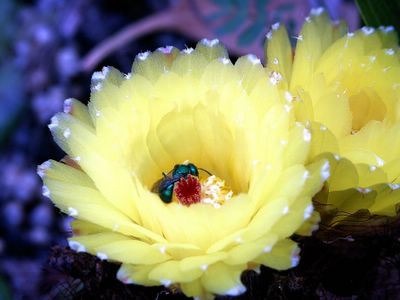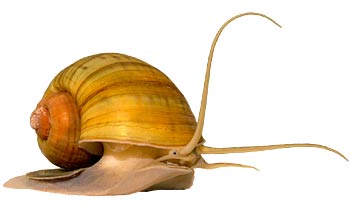
Digital shots of the wild inhabitants and places of my homeland / Fotos digitales de los habitantes salvajes y sus hábitats en mi tierra
Apr 24, 2005
Snowy egret / Garcilla Blanca (Egretta thula)

Wild prairie flower / Flor silvestre de pradera

Uruguay´s highly complex and biologically diversified climax vegetation consists of prairie grasslands in which lawn and creeping grass varieties prevail. These comprise overall approximately 2,500 different species, distributed in over 80 families, including more than 400 species from the graminaceae family. Despite the impact of grazing by cattle, sheep and horses over the past three centuries, the native grassland has shown a remarkable capacity to adapt and retain its biological and economic sustainability. In the past, the prairies formed the principal pillar of Uruguay’s economic development as well as of its social and political history. Even today, native pasture still accounts for over 80% of land use and remains as important as ever for Uruguay’s export trade (meat, wool, leather and dairy).
La compleja biodiversidad de la vegetación de Uruguay comprende principalmente a especies de pradera en las cuales dominan los pastos y plantas rastreras. Existen alrededor de 2,500 especies distribuídas en más de 80 familias entre las que se incluyen 400 especies de la familia de las gramíneas. Pese al impacto del ganado en el transcurso de los tres últimos siglos, la pradera nativa ha demostrado una sorprendente capacidad para adaptarse, reteniendo su sustentabilidad biológica y económica. En el pasado las praderas constituían el pilar principal del desarrollo económico del país, así como de historia social y política. Aún hoy las pasturas nativas representan el 80% de la tierra y son de vital importancia para la exportación de carne, lana, cueros y lácteos.
Native mushrooms / Hongos nativos
Macrosiphonia petraea

Macrosiphonia petraea usually occurs at the foot of sunlit hills. Its stems and the upper side of leaves are fully covered by fine hair while its flowers are white, funnel-shaped with five petals which open at dusk. It blooms in summer.
Fly on Caraguata inflorescence / Mosca en inflorescencias de Caraguatá
Apr 16, 2005
A member of the Himenoptera family / Un miembro de la familia Himenóptera

The Hemiptera is the largest and by far the most sucessful of the Hemimetabolic insects (having young that look like wingless adults and a sort of metamorphosis that does not involve a pupa).The hemiptera range from 1 mm to 11 cm in length, their antennae usually only have 4 or 5 segments. Two or 3 ocelli are usual and their compound eyes are normally well developed. The main feature of these insects is the mouthparts which are of the piercing/sucking type. Within this group the wings of the Heteropterans are usually held flat over the body and the forewings which are hard and stiff almost like beetle elytra, have the end part soft and membranous. Therefore, Heteropteran forewings are referred to as 'hemi-elytra'.
El género Hempitera es el más grande y exitoso de los insectos hemimetabólicos (aquellos cuyas crías parecen adultos sin alas y poseen una clase de metamorfosis que no involucra el estadio de pupa). Su tamaño varía entre 1 mm y 10 cm de longitud y sus antenas usualmente tienen solamente 4 o 5 segmentos. Usualmente se distinguen dos o tres ocelos junto con sus ojos compuestos que se hallan bien desarrollados. La característica principal de este género son sus piezas bucales que están diseñadas para picar y chupar. Dentro de este género los heterópteros pliegan sus alas sobre el cuerpo. Las alas anteriores son rígidas como los élitros de los escarabajos, terminando en una protuberancia suave y membranosa. Es por ello que se denominan 'Hemiélitros'.
Mar 4, 2005
Crenicichla Lepidota (Pike / Cabeza amarga)

Pike Cichlids are a group of South American fishes of the genus Crenicichla. They inhabit the freshwater streams, rivers and pools of most of the Amazonian rivers, but there are many species all the way down to coastal regions of central Argentina and Uruguay. Crenicichla or Pike cichlids as their name implies, are mostly predatory, consuming small fish for prey. Most of them have an elongated body and a wide, protrusible mouth - features common to many predatory fish.
Los cabeza amarga son un grupo de peces del género Crenicichla. Habitan los cursos de agua dulce en la mayoría de los tributarios del Amazonas pero también existen especies en las regiones costeras de Argentina y Uruguay. Son peces predadores que consumen otros peces de porte más pequeño. La mayoría de ellos poseen cuerpo alargado y boca saliente, una característica típica de los peces con estos hábitos alimenticios. Desovan usualmente en pequeñas oquedades, lo que hace muy difícil de hallar sus huevos. La hembra es responsable por su cuidado mientras que el macho se encarga de vigilar e intimidar a los intrusos que acerquen demasiado. Las crías nacen entre los 3 y 4 días de la puesta y pueden nadar libremente 3 o 4 días más tarde, dependiendo de la temperatura circundante.
(Río Cuareim - Artigas)
Mar 2, 2005
Gymnogeophagus balzanii

The males of this cichlid have a huge clear liquid filled 'hump' on their forehead that starts at the top of the head at the beginning of the dorsal fin and continues down to the upper lip. The shape of this 'hump' gives them a very square and large looking head. They also shimmer with dazzling iridescent colored speckles on their sides ranging from green to blue. These beautiful speckles could also be seen in their ventral and anal fins. The male has a long extension on his dorsal fin as seen in most cichlid species. Both sexes have also the vertical bars. The females are a bit smaller than the males and lack hump.
Los machos de este cíclido poseen una protuberancia llena de líquido en su frente, la cual comienza en la parte superior de la cabeza al comienzo de la aleta dorsal y continúa hasta el labio superior dándoles una forma casi cuadrada. Sus escamas brillan con colores iridescentes que varían del verde al azul. Dichas iridiscencias pueden también verse en la aleta dorsal y anal. Otro aspecto característico de los machos es una larga extensión en ambos extremos de la cola como ocurre en muchos cíclidos. Ambos sexos poseen barras verticales. Las hembras a su vez son más pequeñas y carecen de la joroba.
(Río Uruguay - Salto)
Mar 1, 2005
Rhino beetle / Cascarudo (Diloboderus abderus)

This widespread rhino beetle is considered as a real plague by farmers due to the damage maggots (larvae) cause to crops by eating roots and tubercles. In captivity, however, the larvae feed on rotten compost and wood and will not feed on any but the most rotted wood. Female imagoes (pupae) are easy to distinguish from males since only the latter have horns.
Este escarabajo ampliamente distribuído en Uruguay es considerado como una plaga dado el daño que causan las larvas a los plantíos alimentandose de raíces y tubérculos. En cautividad, sin embargo, las larvas solamente suelen alimentarse de madera y materia orgánica en putrefacción. Las pupas hembras son fácilmente distinguibles de los machos dado que solamente los primeros presentan cuernos.
(Montevideo)
Feb 26, 2005
Notocactus flower / Flor de Notocactus (Parodia Ottoni)

There are over 2000 species of cacti, and these can be arranged in a system based on their presumed degrees of relationship. Within the cactus family (Opuntiae) it is generally accepted that plants fall into three natural groups, called sub-families, which evolved perhaps by 20 million years ago as a result of a gradual adaptive evolutionary process. By this time, Plate Tectonics had spread the Atlantic sea floor to such a width that these adaptations were absolutely confined to the Americas. Consequently, Cactaceae are native only to the Americas.

Native wasp pollinizing Notocactus flower / Avispa nativa polinizando flor de Notocactus (Notocactus Ottoni o Parodia Ottoni)

Notocactus is a genus of about 25 species of South-American cacti from low elevations of Argentina, Paraguay, Uruguay, and Southern Brazil. They are grown for their spine formations, as well as for their attractive flowers. The genus name comes from the Greek for "cactus from the south". It has now been merged with Parodia. Since the name Parodia was used before Notocactus, it has precedence and all the Notocactus became Parodia.
Notocactus are almost always globose, elongating as they age, some species eventually reach 3 feet (90 cm). Their flowers are bell shaped, yellow, or occasionally red. They come in groups of 3 or 4 at several times during the year Each flower lasts around a week.

Freshwater squat lobster / Páncora (Aegla Uruguayana)

La endémica familia sudamericana de cangrejos de agua dulce, los Aeglidae, consisten en dos géneros: el extinto Haumuriaegla y el existente Aegla. En este último género habrían 60 especies descriptas; todas ellas ubicadas en el cono sur con una distribución limitada entre las latitudes 20ºS y 50ºS. Muy poco se sabe acerca de la biología reproductiva de los Aegla.
(Laguna próxima al arroyo Convento - Cerro Largo)

Orb weaver / Araña tejedora (Nephila sp.)

Orb Weavers build large, strong, vertical orb webs. Generally, the spider constructs its web in the evenings and takes it down again at dawn. The spider rests head-down in the centre of the web, waiting for prey. During the day, the spider rests on nearby foliage with its legs drawn under the body. Flying insects such as flies, beetles and bugs are common prey. Butterflies and day-active moths are sometimes caught but are partially protected from web entrapment by the presence of scales on their wings - these scales can be shed and this may allow the insect to struggle free of the sticky web. The female of the Nephila species greatly out-sizes the male. So, very often the male Nephila spider is mistaken for an offspring when it is found on the web with the female because of its small size and different color.
Feb 25, 2005
Damselflies / Damiselas




The damselfly adult looks much like the dragonfly. However, it can be distinguished by the way it holds its wings when at rest. The dragonfly holds its wings out to the sides when resting, whereas the damselfly holds its wings together above it body.
Dragonfly / Alguacil (Odonata)

There are about 6500 existant species of dragonflies and damselflies in just over 600 genera. Adult dragonflies are medium to large in size, often conspicuous and/or brightly colored insects and are aerial predators hunting by sight. They generally are found at or near fresh water although some species roam widely and may be found far from their breeding sites. The larvae are predatory, aquatic and occur in all manner of inland waters.
To some extent the presence of dragonflies may be taken as an indicator of ecosystem quality. Local faunal composition may be strongly affected by any change in water flow, turbidity, etc., or in aquatic or waterside vegetation. The greatest numbers of species are found at sites which offer a wide variety of microhabitats.
The order Odonata to which dragonflies belong is divided into two main suborders: Zygoptera (damselflies) and Anisoptera (dragonflies). The common name "dragonfly" also is used for the whole order. More than one-half of all species are tropical but odonates of both major suborders occur in every faunal region except Antarctica.

Feb 24, 2005
Apple snail with eggs / Ampularia con huevos (Pomacea Canaliculata)

Apple snails are exceptionally well adapted to subtropical regions with periods of drought alternated with periods of excessive rainfall. This adaptation is reflected in their life style: moderately amphibious and being equipped with a shell door (operculum) enabling the snail to close its shell (to prevent drying out while hiding in the mud).
Pomacea is sexual mature at the size of 2.5 cm/1 inch. The reproductive rate of this snail varies with the temperature and partly by the availability of food. The reddish (due to the high carotenoid content) eggs are tightly attached to each other. They are attached on object above the waterline and their size varies from 2.20 to 3.5 mm (0.5 to 0.9 inch) diameter. An average clutch contains 200 to 600 eggs.

Las ampularias son moluscos bien adaptados a las regiones subtropicales con períodos de sequía alternados con perídos de lluvia excesiva. Esta adaptación se refleja en su vida: moderadamente anfibios, equipados con un opérculo que le permite al animal cerrar su caparazón (y así impedir que se seque cuando se oculta en el barro)
El caracol está sexualmente maduro cuando alcanza un tamaño de alrededor de 2.5 cm. Su índice de reproducción varía de acuerdo a la temperatura y la disponibilidad de comida. Los huevos rojizos (debido a una alta concentración carotenoide) están fuertemente adheridos entre ellos. Con un diámetro entre 2.20 a 3.5 mm, se fijan a cualquier objeto cercano a la superficie del agua. Cada desove cuenta de 200 a 600 de ellos.
(Laguna próxima a Arroyo Convento - Cerro Largo)

Juvenile grasshopper / Saltamontes juvenil

Grasshoppers can be found almost everywhere in the world, except for the colder regions near the North and South poles. They live in fields, meadows, and just about anywhere they can find generous amounts of leaves to eat (which they do with a passion). Some types of grasshoppers will only eat certain types of plants. Others like the one shown, will eat any type of plant they can find.
Los saltamontes pueden ser encontrados casi en cualquier sitio del mundo, excepto en regiones más frías cercanas a los polos Norte y Sur. Viven en campos, praderas y cualquier lugar donde puedan encontrar hojas (las cuales devoran con pasión). Algunos saltamontes solamente comerán ciertos tipos de plantas. Otros como el mostrado aquí solamente comerán cualquier planta que hallen.
(Arboretum Lussich)

Parrot feather / Cola de zorro (Myriophillum aquaticum)


Parrot feather is an emersed plant that trails along the ground or water surface. It is easy to see why this plant is called like that: its delicate, feathery, bright green leaves grow in profusion.
La Cola de Zorro es una planta acuática que emerge al aire y puede extenderse en el suelo o en la superficie del agua. Conocida en Inglés como "pluma de loro", es fácil entender su apelativo: delicadas y emplumadas hojas verdes que crecen en profusión
Aphid sucking sap / Áfido succionando savia

Aphids are small, soft-bodied insects with long, slender mouth parts that they use to pierce stems, leaves, and other tender plant parts and suck out plant fluids. Almost every plant may have one or more aphid species that feeds on it
Los áfidos son insectos pequeños, de cuerpo suave con estructuras bucales alargadas que utilizan para penetrar en los tallos, hojas y otras partes tiernas de las plantas, de las que extraen sus fluídos. Casi todas las plantas pueden tener una o dos especies de áfidos de las que se alimentan.
(Estancia en los alrededores de Solís de Mataojo - Canelones)

Xylocopa sp. (Large carpenter bee / Aveja carpintera o Mangangá)

These bees obtain their common name from their nesting habits: chewing galleries in solid wood or in stumps, logs, or dead branches of trees
Estas abejas obtienen su nombre común (abeja carpintera) de sus hábitos de nidificación: abriendo galerías en madera sólida como troncos o ramas caídas de los árboles.
(Parque Lussich - Maldonado)

Weevil on Bur Marigold / Gorgojo sobre Amor seco (Bidens laevis)

Weevils are specialized beetles with an elongated head and a protruding, often curved snout that bears the mouthparts and antennae. Most weevils are plainly or concealingly colored, but a few are bright. Adults are commonly found on flowers and fruit, often escaping potential predators by "playing possum"--that is, pretending to be dead.
Los gorgojos son escarabajos especializados con cabeza elongada y hocico alargado en el que alberga las estructuras bucales y las antenas. La mayoría de los gorgojos son de colores poco vistosos, siendo la minoría coloridos. Los adultos son comúnmente encontrados sobre las flores y frutas, a menudo escapándose de los predadores potenciales "haciéndose los muertos" cuando son atacados.
(Arboretum Lussich - Maldonado)

Feb 22, 2005
A member of Uruguay's savannah ecoregion / Un miembro de la ecoregión pradera de Uruguay (Habranthus tubispathus)














